Old Town 2007
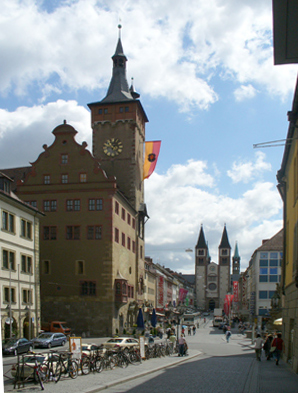
This is a view of the main street, with the Town Hall to the left and the Dom at the end of the street.
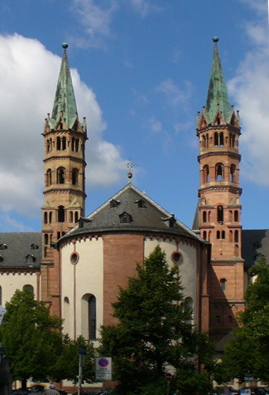
This is the Dom (St. Killian's Cathedral) from the rear.
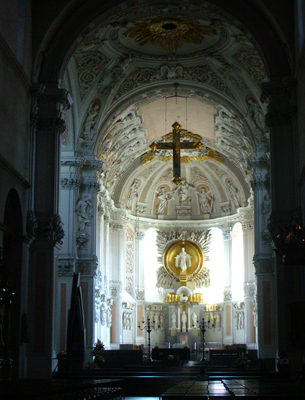
The nave is kept dark, representing the Dark Ages, and the progression is toward the light area above the altar, representing the Second Coming of Christ.

A closeup of the statue of Christ above the altar.
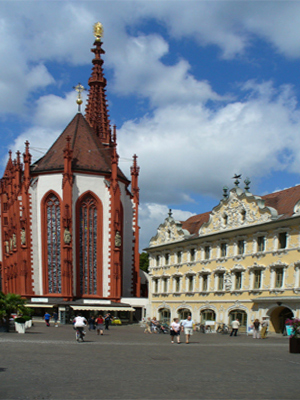
At a nearby marketplace, the Marienkapelle (1377-1479; restored after 1945), the finest Late Gothic building in Würzburg.
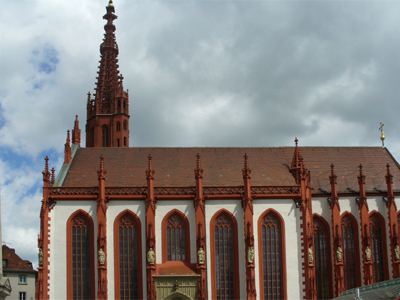
A side view of the Marienkapelle.

An interior view.
The newest of the three churches in this area is the baroque Neuemunster Basilica. Although a church existed here from 1060, from 1711-1722:, after the demolition of the western chancery, the baroque west building with the dome and the Westfassade was erected by Joseph Greising, and the interior was baroqueized in the following years

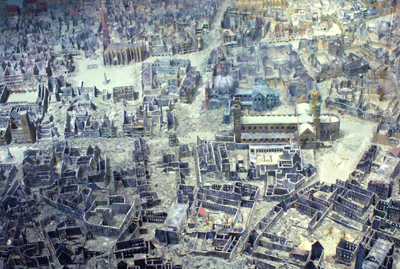
A model of the destruction after the 1945 bombing of Würzburg. Note the remains of the Dom at the right center and the Marienkapelle towards the top at the left of center.

Views of the fortress in the afternoon. The fortress is from 1200. In 1631 the massive walls were built to protect the Marienberg. In 1945 the fortress was almost completely burned out, and its reconstruction was only completed in 1990.
Old Town 2017
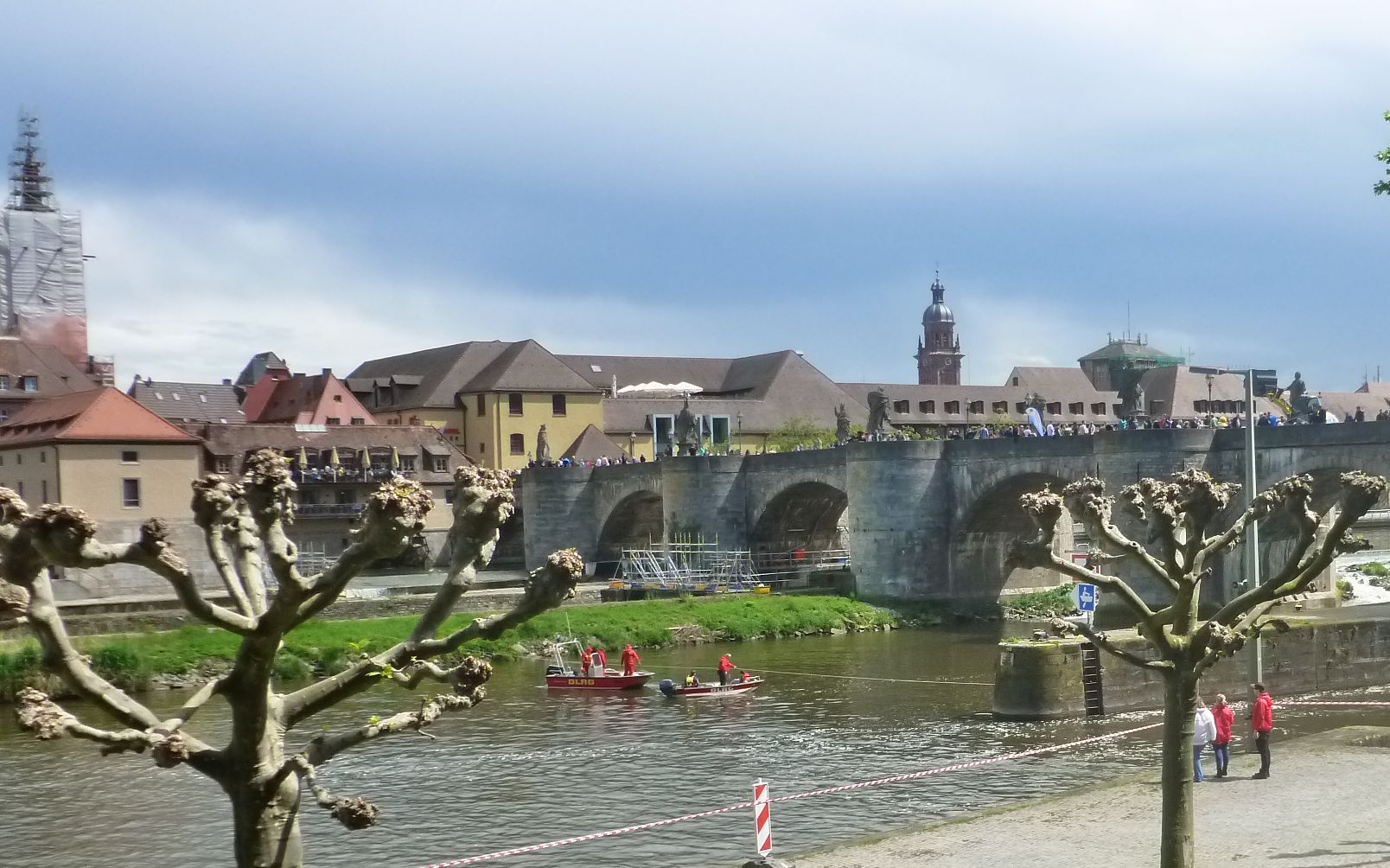
This is a view of the bridge, with the scaffolding of the Town Hall to the left .

A statue of St, Killian on the bridge with the fortress in the background.
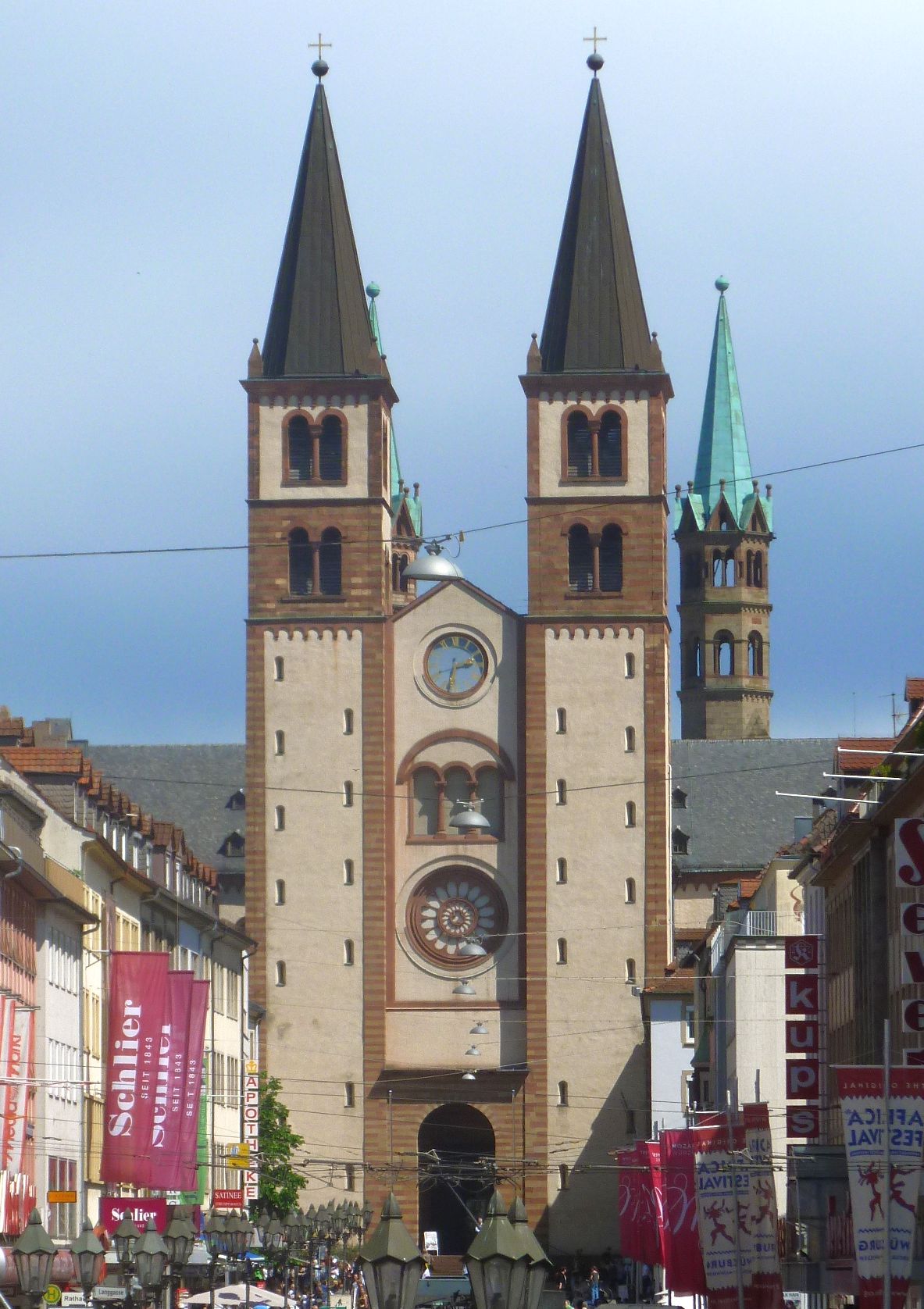
A view of St. Killian' Cathedral from the bridge.
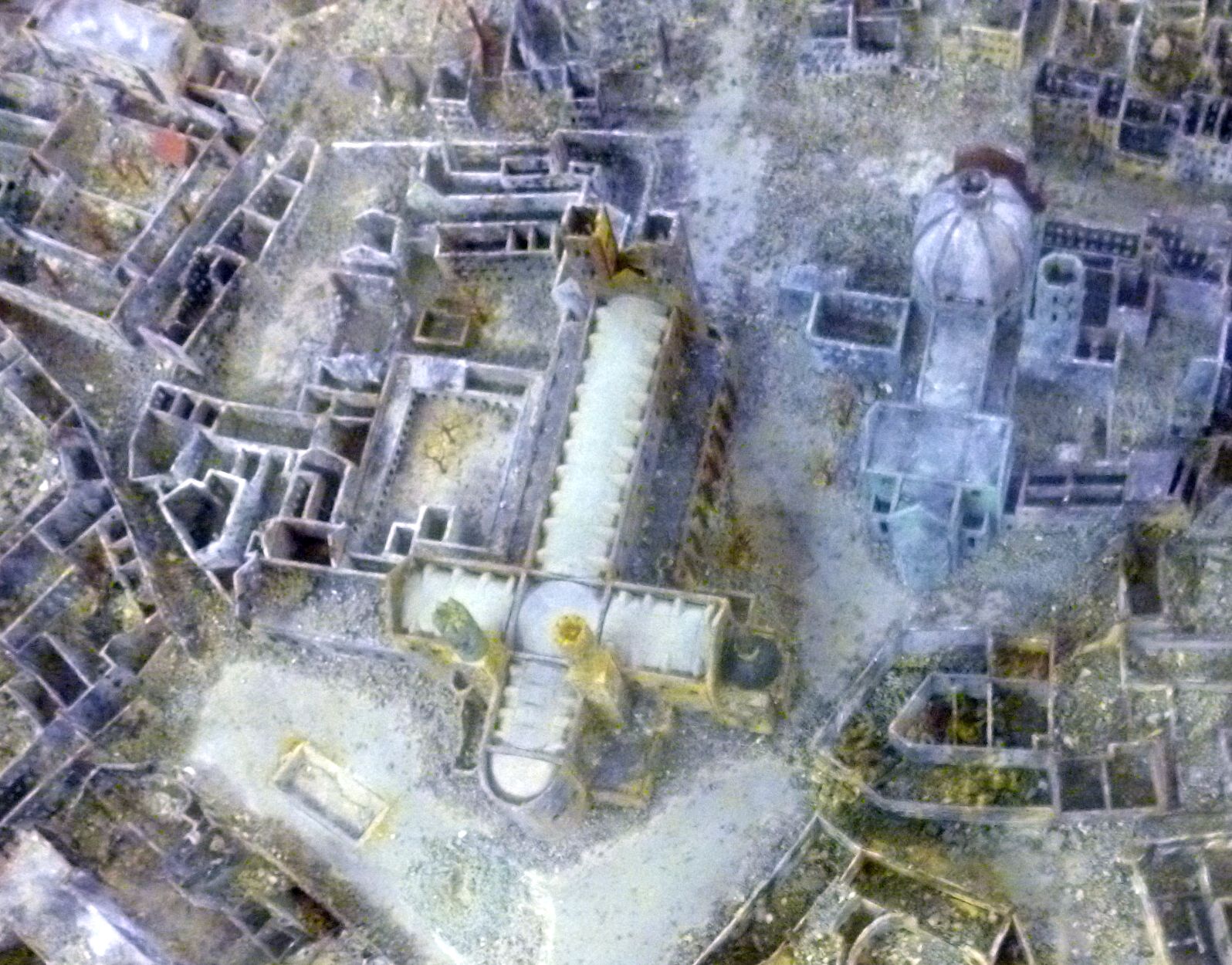
A different photo of the effects of the bombing, with St. Killian's in the center and what is now the Neuemunster to its right
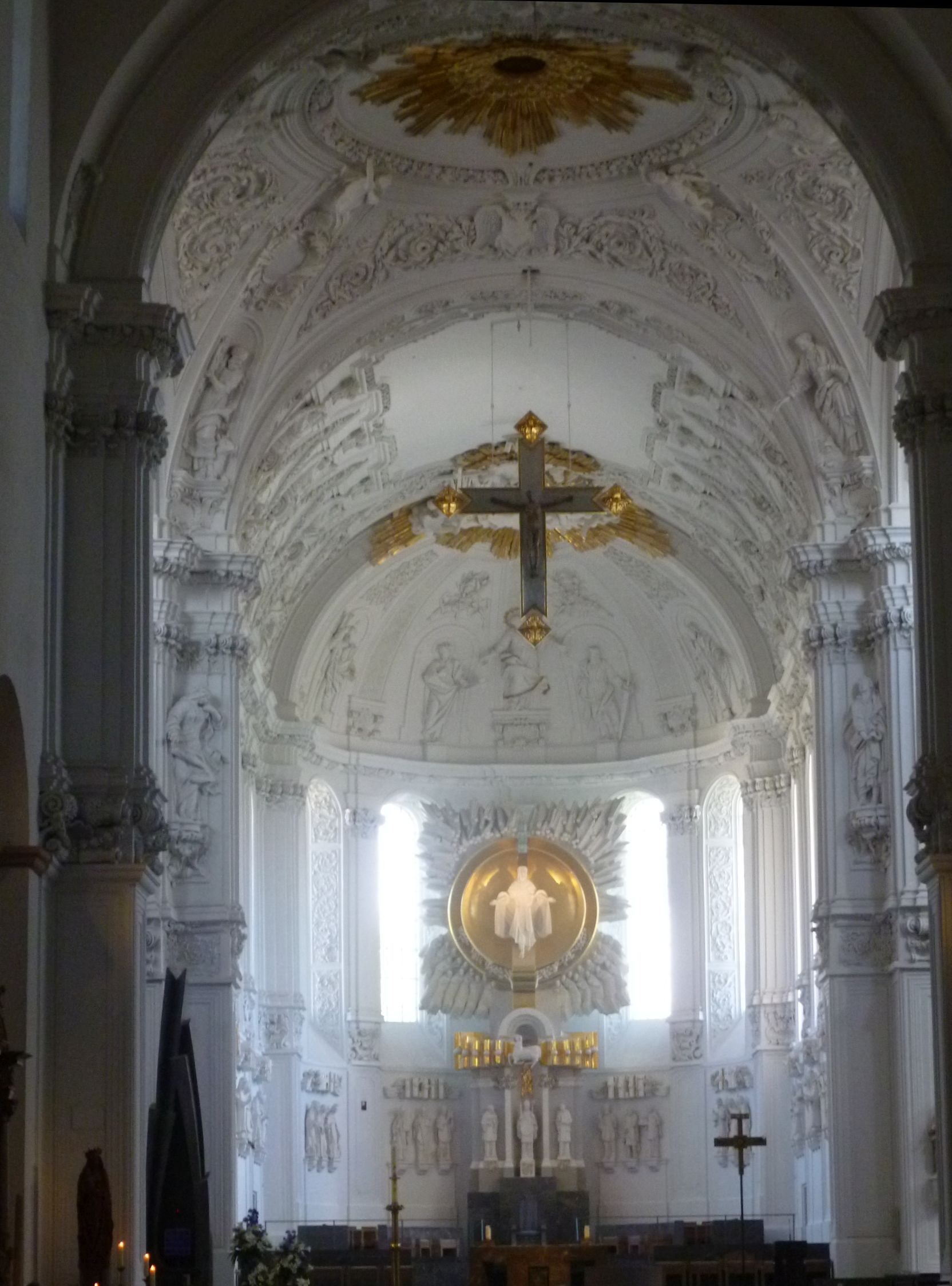
The altar of St. Killian's.
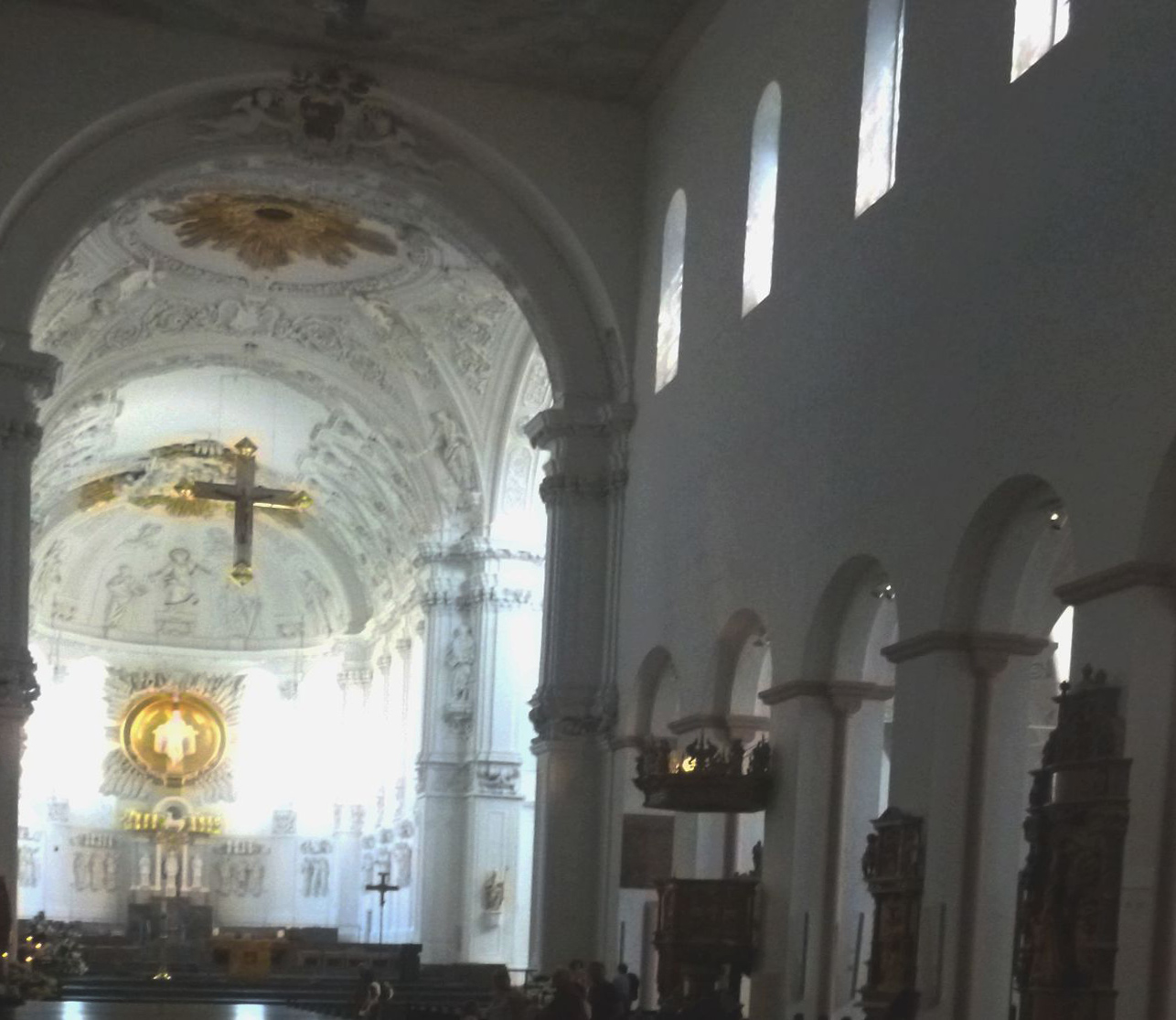
This photo demonstrates how the rear of the church is dark and the fromt is light, as described above. The nave is kept dark, representing the Dark Ages, and the progression is toward the light area above the altar, representing the Second Coming of Christ
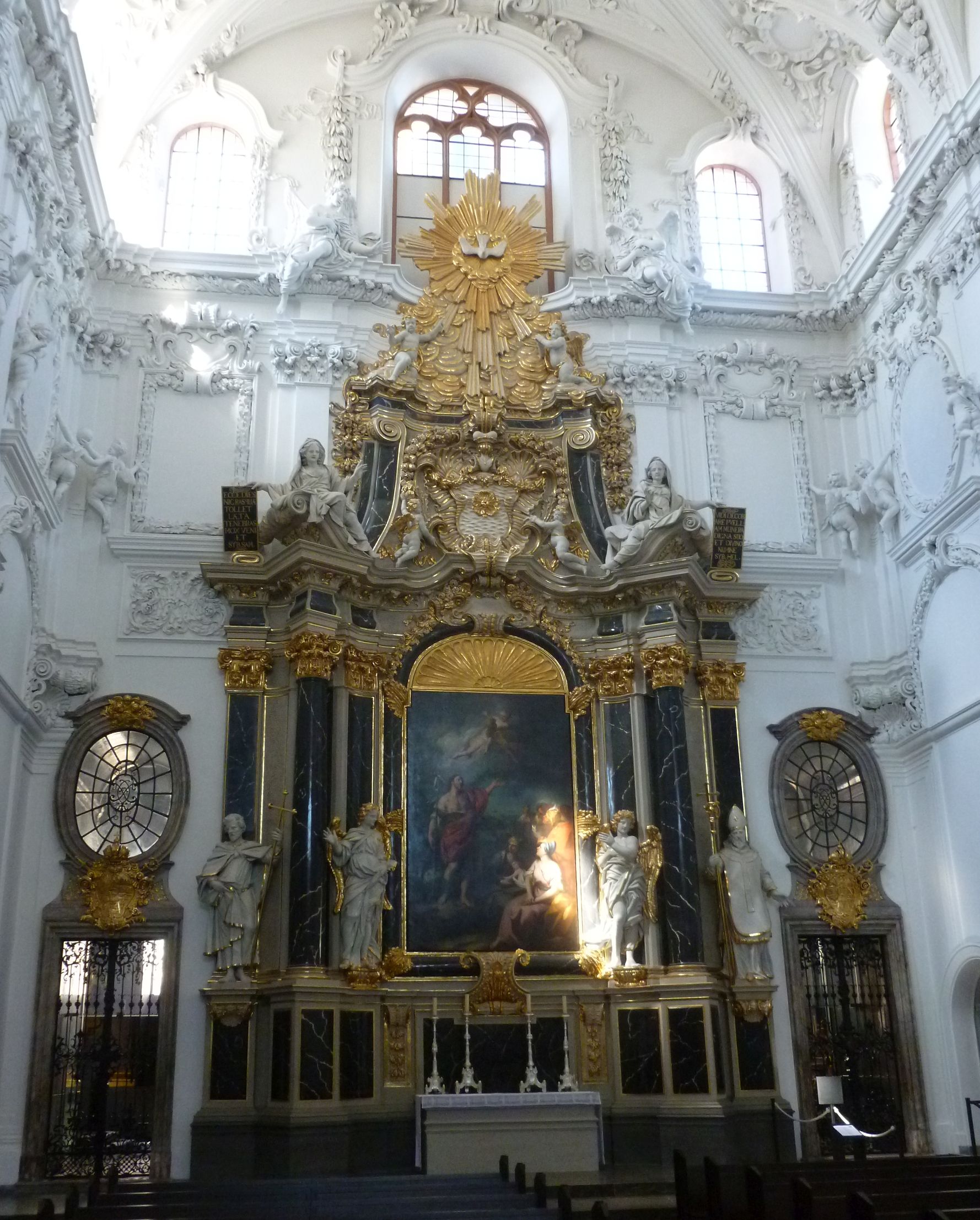
A transept.
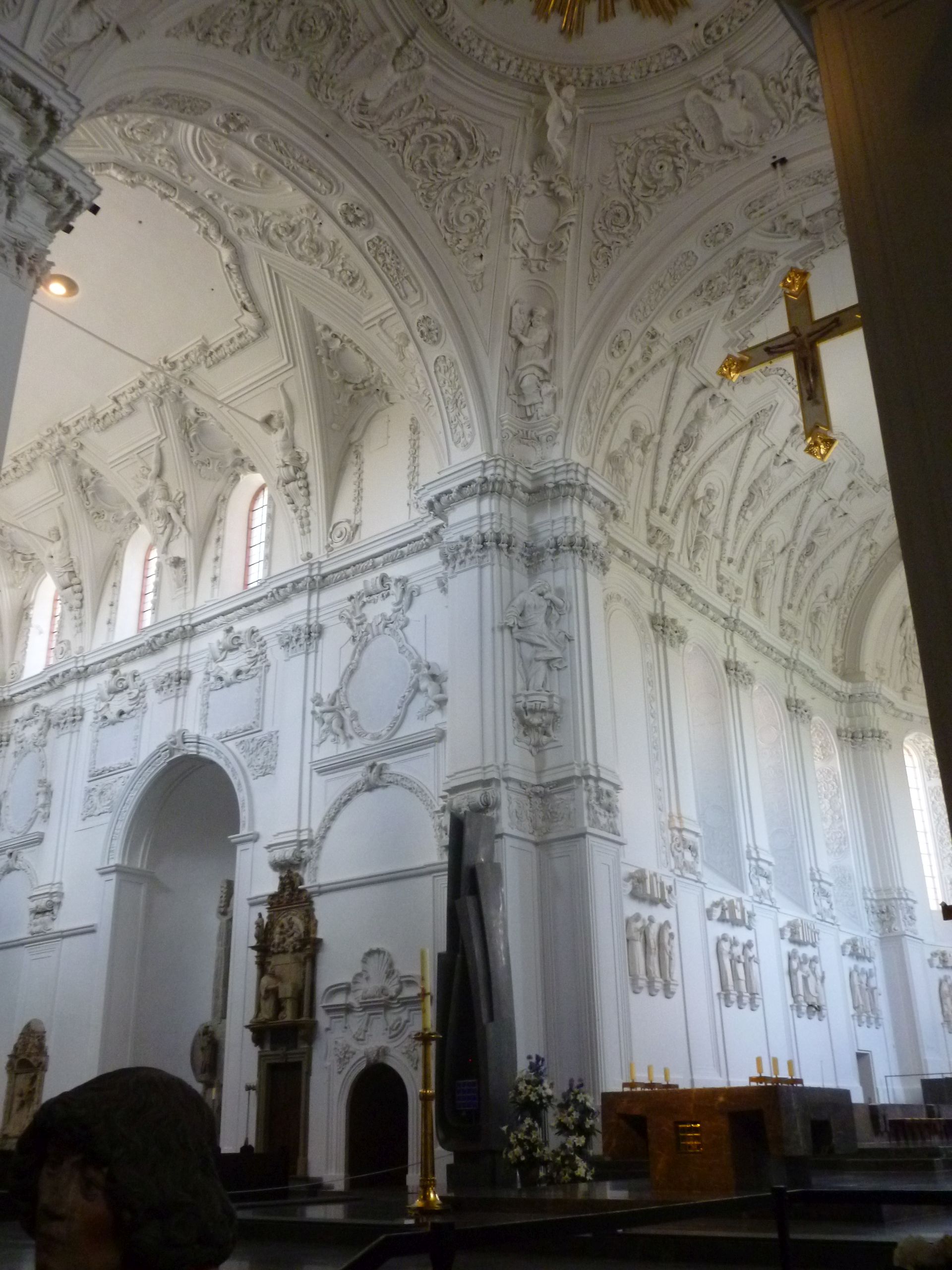

At a nearby marketplace, the Marienkapelle (1377-1479; restored after 1945), the finest Late Gothic building in Würzburg.

A side view of the Marienkapelle.

An interior view.

The newest of the three churches in this area is the baroque Neuemunster Basilica. Although a church existed here from 1060, from 1711-1722:, after the demolition of the western chancery, the baroque west building with the dome and the Westfassade was erected by Joseph Greising, and the interior was baroqueized in the following years
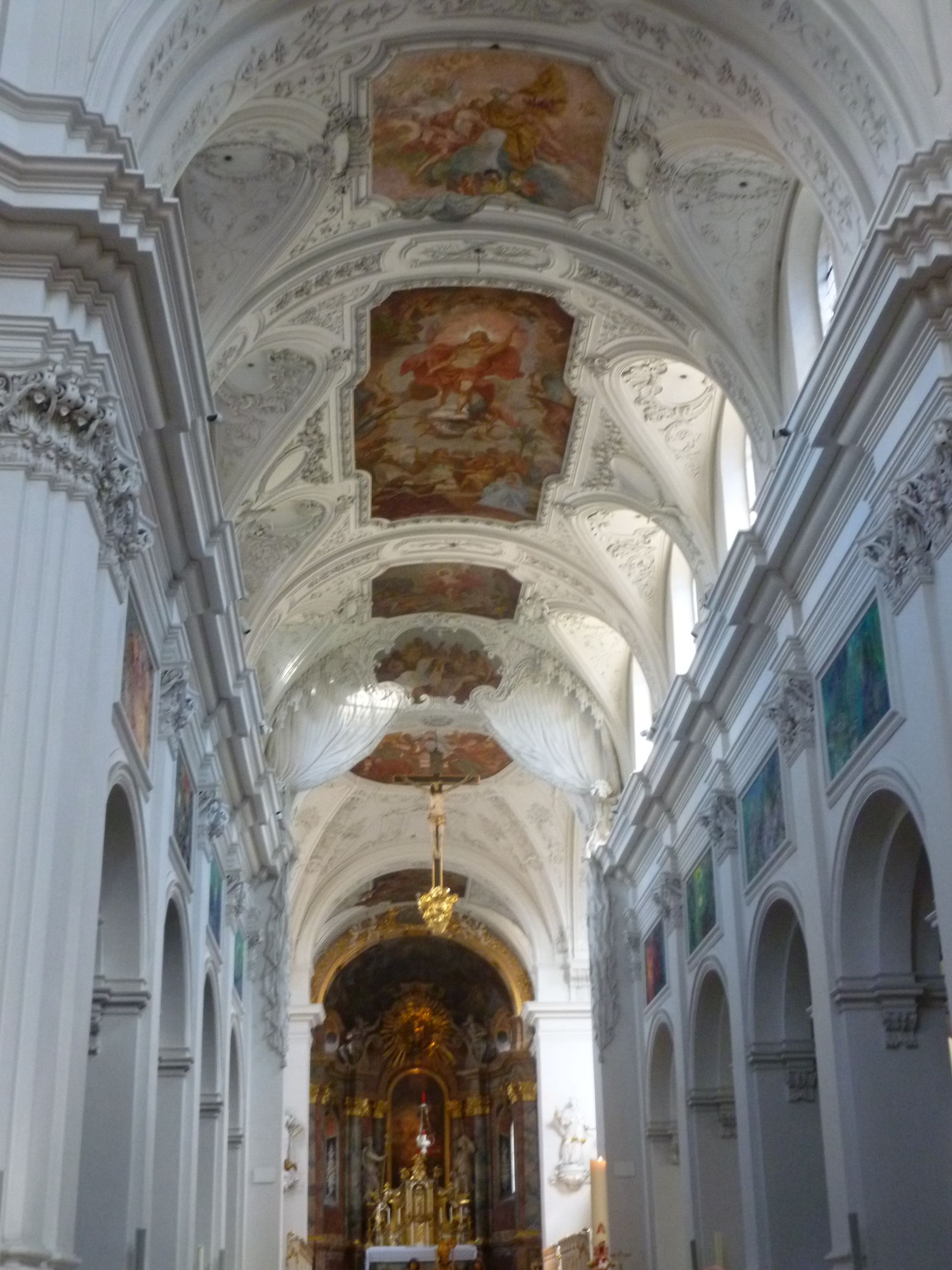
The interior is baroque.


